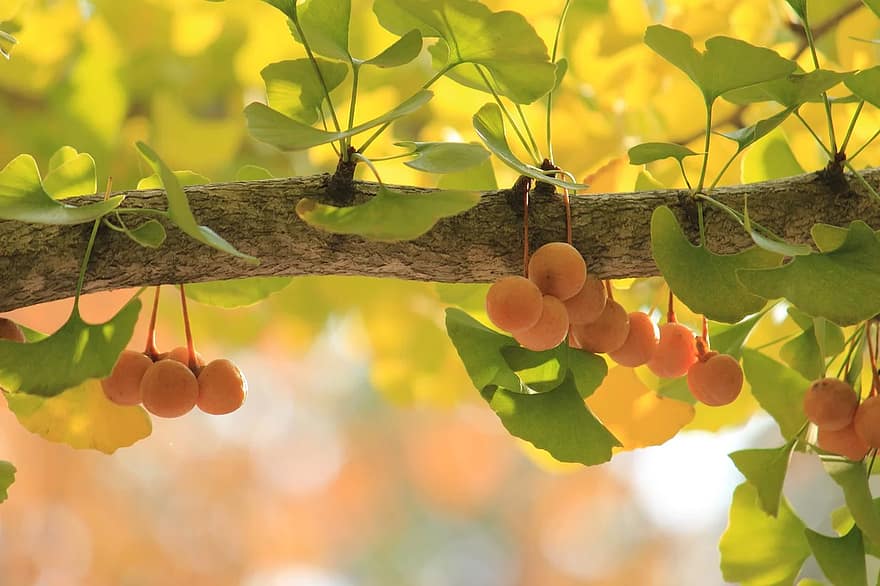Ginkgo biloba (Maidenhair tree)

Ginkgo biloba, named commonoly Ginkgo or Maidenhair tree, is a popular traditional plant which is naturally growing in Asia especially in China and Japan. In fact, This perennial tree belonging to the Ginkgoaceae family is one of the oldest and most resistant trees in the world.
Indeed, Ginkgo is widely appreciated for its ornamental qualities but more appreciated for its therapetic properties. Throughout human history, its leaves rich in antioxidants, flavonoids and also terpenoids are used to enhance brain health and treat a variety of abnormalities.
To clarify more, Ginkgo is a conifer forming dense, conical trees that can reach 40 m high and can live for over 1,000 years. Furthermore, this magical plant has deciduous, fan-shaped, rich-green leaves which turn bright yellow in fall to form a golden carpet when they fall. Also, Ginkgo blooms in spring in long yellow male flowers and large female flowers.
Also, Maidenhair is a dioecious species, with male trees and female trees. So, the female trees produce small, fleshy, brownish-orange, edible fruits that give unpleasant odor as they ripen and become very poisonous. It is for this reason that most plants sold for ornament are male plants. In fact, Ginkgo trees are extremely adaptable and are resistant to pollutants, fungicides, insects, and drought.
Finally, during the first 5 years, it will be necessary to water the young Ginkgo tree so that it settles well. Subsequently, it should not be moved so as not to hurt its deep roots. Also, give it a good sun exposure and a well-drained, moist soil.
Datasheet
| Common Name | Maidenhair tree, Ginkgo |
|---|---|
| Botanical name | Ginkgo biloba |
| Family | Ginkgoaceae |
| Life Cycle | Perennial |
| Foliage | Deciduous |
| Basic Colour | yellow, green |
| Height | 10 -> 50 m |
| Habitat | Very adaptable |
| Altitude | Very adaptable |
| Bloom Time | April – May |
| Plant Type | Tree, Ornemental, Outdoor, Medicinal, Aromatic, Toxic |
| Fruit Type | Nut |
| different tolerances | Hardy |
| Used Parts | Whole plant |
| Plant Uses | Pharmacopeae, Culinary, Edible fruit, Ornamental, construction, biological |
| Active substances | Antioxidants, flavonoïds, terpenoids |
| USDA Zone | 3 (-40) – 11 (+4) |
| Sun Exposure | full sun, |
| Soil pH | Alkaline, Neutral, Acidic |
| Soil Moisture | Moist |
| Soil Type | Sandy, Silty, Clayey, Stony, Peaty |
| Propagation | by sowing, by Cuttings, by division |
| Germination | Tell us |
| Pests/ Diseases | Pests resistant |
Open Next Page To See More Photos.